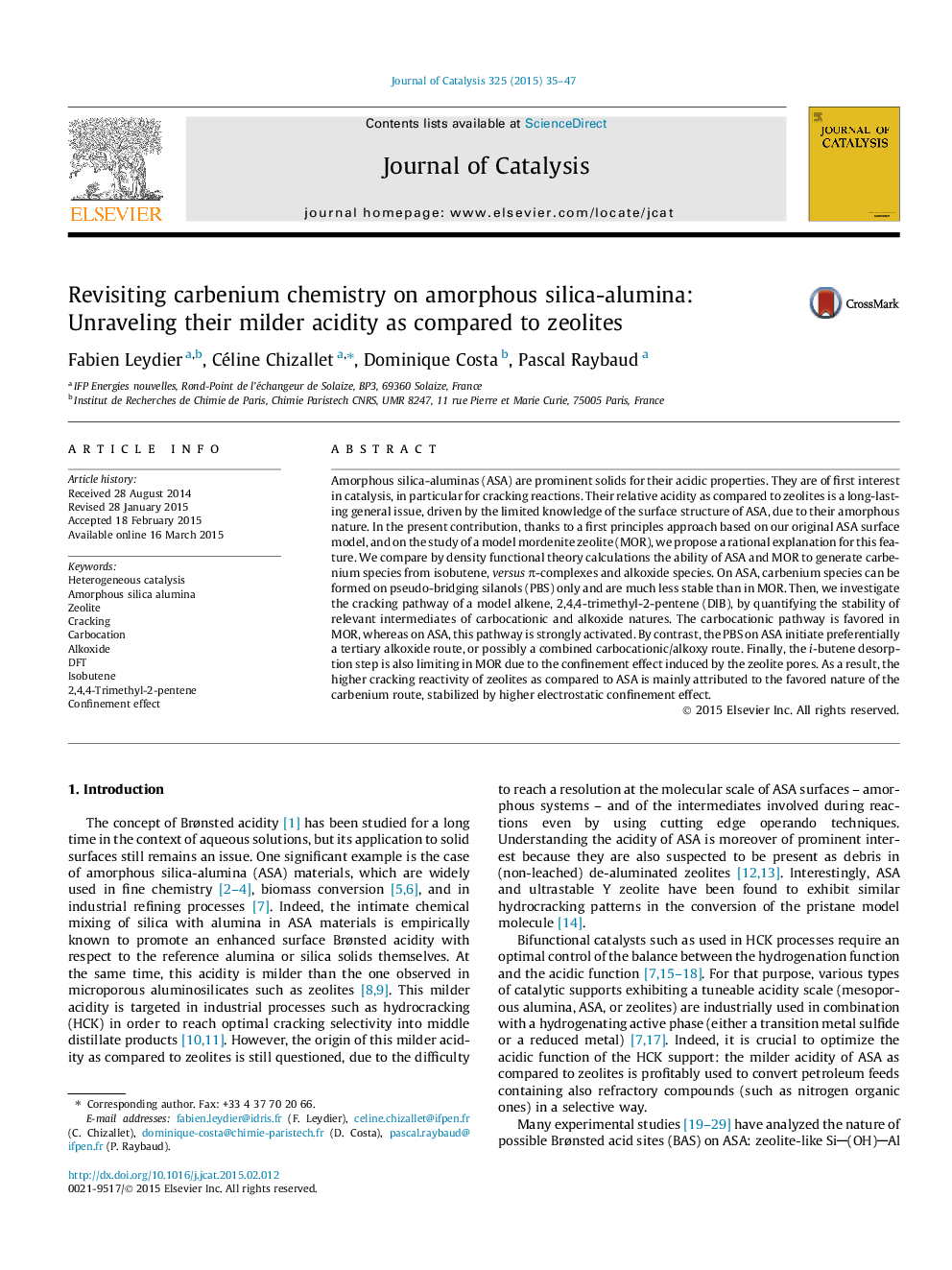| کد مقاله | کد نشریه | سال انتشار | مقاله انگلیسی | نسخه تمام متن |
|---|---|---|---|---|
| 60887 | 47551 | 2015 | 13 صفحه PDF | دانلود رایگان |
• Acid sites on ASA able to protonate alkenes are unraveled by DFT calculations.
• Alkoxide routes are likely on ASA for alkene cracking, carbenium routes in zeolites.
• The high cracking ability of zeolites is due to electrostatic confinement effects.
• These effects are absent on ASA, which explains their lower acidity.
Amorphous silica-aluminas (ASA) are prominent solids for their acidic properties. They are of first interest in catalysis, in particular for cracking reactions. Their relative acidity as compared to zeolites is a long-lasting general issue, driven by the limited knowledge of the surface structure of ASA, due to their amorphous nature. In the present contribution, thanks to a first principles approach based on our original ASA surface model, and on the study of a model mordenite zeolite (MOR), we propose a rational explanation for this feature. We compare by density functional theory calculations the ability of ASA and MOR to generate carbenium species from isobutene, versus π-complexes and alkoxide species. On ASA, carbenium species can be formed on pseudo-bridging silanols (PBS) only and are much less stable than in MOR. Then, we investigate the cracking pathway of a model alkene, 2,4,4-trimethyl-2-pentene (DIB), by quantifying the stability of relevant intermediates of carbocationic and alkoxide natures. The carbocationic pathway is favored in MOR, whereas on ASA, this pathway is strongly activated. By contrast, the PBS on ASA initiate preferentially a tertiary alkoxide route, or possibly a combined carbocationic/alkoxy route. Finally, the i-butene desorption step is also limiting in MOR due to the confinement effect induced by the zeolite pores. As a result, the higher cracking reactivity of zeolites as compared to ASA is mainly attributed to the favored nature of the carbenium route, stabilized by higher electrostatic confinement effect.
Figure optionsDownload high-quality image (180 K)Download as PowerPoint slide
Journal: Journal of Catalysis - Volume 325, May 2015, Pages 35–47
